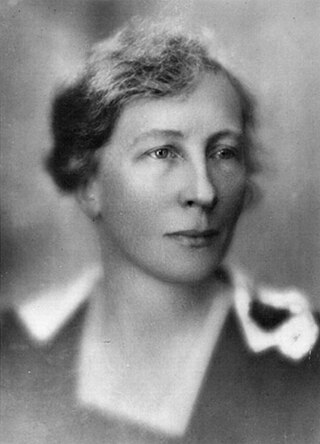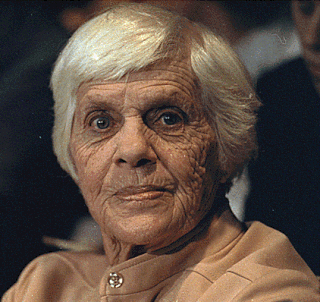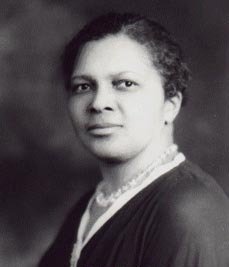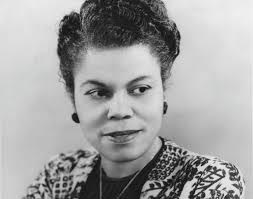Related Research Articles

Margaret Mead was an American cultural anthropologist who featured frequently as an author and speaker in the mass media during the 1960s and the 1970s.

Lillian Evelyn Gilbreth was an American psychologist, industrial engineer, consultant, and educator who was an early pioneer in applying psychology to time-and-motion studies. She was described in the 1940s as "a genius in the art of living." Gilbreth, one of the first female engineers to earn a Ph.D., is considered to be the first industrial/organizational psychologist. She and her husband, Frank Bunker Gilbreth, were efficiency experts who contributed to the study of industrial engineering, especially in the areas of motion study and human factors. Cheaper by the Dozen (1948) and Belles on Their Toes (1950), written by two of their children tell the story of their family life and describe how time-and-motion studies were applied to the organization and daily activities of their large family. Both books were later made into feature films.

Lillian D. Wald was an American nurse, humanitarian and author. She strove for human rights and started American community nursing. She founded the Henry Street Settlement in New York City and was an early advocate for nurses in public schools.

Bessie Lillian Carter was an American nurse. Carter's son Jimmy Carter served as president of the United States from 1977 to 1981. She was also known for her contributions as a Peace Corps volunteer in India and for writing two books during his presidency.

Hildegard E. Peplau was an American nurse and the first published nursing theorist since Florence Nightingale. She created the middle-range nursing theory of interpersonal relations, which helped to revolutionize the scholarly work of nurses. As a primary contributor to mental health law reform, she led the way towards humane treatment of patients with behavior and personality disorders.
Lillian Ross was an American journalist and author, who was a staff writer at The New Yorker for seven decades, beginning in 1945. Her novelistic reporting and writing style, shown in early stories about Ernest Hemingway and John Huston, are widely understood as a primary influence on what would later be called "literary journalism" or "new journalism."

Florence Barbara Seibert was an American biochemist. She is best known for identifying the active agent in the antigen tuberculin as a protein, and subsequently for isolating a pure form of tuberculin, purified protein derivative (PPD), enabling the development and use of a reliable TB test. Seibert has been inducted into the Florida Women's Hall of Fame and the National Women's Hall of Fame.

Lavinia Lloyd Dock was an American nurse, feminist, writer, pioneer in nursing education and social activist. Dock was an assistant superintendent at Johns Hopkins School of Nursing under Isabel Hampton Robb. She founded what would become the National League for Nursing with Robb and Mary Adelaide Nutting. Dock was a contributing editor to the American Journal of Nursing and authored several books, including a four-volume history of nursing and Materia Medica for Nurses, the nurse's standard manual of drugs for many years. In her later life, she also campaigned for social reform, particularly women's rights.

Jane Edna Hunter, an African-American social worker, Hunter was born on the Woodburn Farm plantation near Pendleton, South Carolina. She was involved in the NAACP and NAACW. Jane Edna Hunter is widely Known for her work in 1911 when she established the Working Girls Association in Cleveland, Ohio, which later became the Phillis Wheatley Association of Cleveland.
Sarah Lee Lippincott, also known as Sarah Lee Lippincott Zimmerman, was an American astronomer. She was professor emerita of astronomy at Swarthmore College and director emerita of the college's Sproul Observatory. She was a pioneer in the use of astrometry to determine the character of binary stars and search for extrasolar planets.
Ruth Watson Lubic, CNM, EdD, FAAN, FACNM, is an American nurse-midwife and applied anthropologist who pioneered the role of nurse-midwives as primary care providers for women, particularly in maternity care. Lubic is considered to be one of the leaders of the nurse-midwifery movement in the United States.
Sandra Welner (1958–2001) was an American physician, inventor, and advocate for disabled women's healthcare.
The Evening Dispensary for Working Women and Girls was an innovative American health care service at the turn of the twentieth century. As a public dispensary, it provided "outpatient medical treatment and advice to patients, in contrast to the inpatient service provided by hospitals". It offered medical treatment for poor women, educated the public on health matters, and provided female medical students with an opportunity to learn and gain experience.

Estelle Massey Riddle Osborne was an African American nurse and educator. She served in many prominent positions and worked to eliminate racial discrimination in the nursing field.

Naomi Deutsch was a professional Registered nurse, the organizer and director of the Public Health Unit of the Federal Children's Bureau of the Department of Labor of Washington, D.C.

Annie "Anne" Gillespie Shaw CBE was a Scottish engineer and businesswoman. Shaw specialised in time and motion studies. In 1945, she founded the Anne Shaw Organisation Ltd, a consulting company.

Lillian Holland Harvey (1912–1994) was an American nurse, educator and doctor known for her contributions to medical education. She was an activist for the equal rights of African Americans. Harvey's accomplishments were achieved at a time in history when both African Americans and women faced extreme discrimination in academics and the medical field. She was seen as a leader in her community and led a successful professional and personal life.
Katharine Jane Densford (1890–1978) was an American nurse who made important contributions to nursing education and to nursing services during World War II. Densford was Director of the University of Minnesota School of Nursing, serving in that position from 1930 to 1959. Densford’s leadership of Minnesota’s flagship school of nursing, located in the Minneapolis-Saint Paul area provided the model for nursing education throughout the state and nation. Her pragmatic leadership during World War II made a significant contribution to the United States war effort.

Alma Vessells John was an American nurse, newsletter writer, radio and television personality, and civil rights activist. Born in Philadelphia in 1906, she moved to New York to take nursing classes after graduating from high school. She completed her nursing training at Harlem Hospital School of Nursing in 1929 and worked for two years as a nurse before being promoted to the director of the educational and recreational programs at Harlem Hospital. After being fired for trying to unionize nurses in 1938, she became the director of the Upper Manhattan YWCA School for Practical Nurses, the first African American to serve as director of a school of nursing in the state of New York.. In 1944, John became a lecturer and consultant with the National Nursing Council for War Service, serving until the war ended, and was the last director of the National Association of Colored Graduate Nurses from 1946 until it dissolved in 1951. Her position at both organizations was to expand nursing opportunities for black women and integrate black nurses throughout the nation into the health care system.
References
- 1 2 3 4 5 6 Howes, Durward (1935). American women; the official who's who among the women of the nation. Vol. 3. Los Angeles, Calif.: Richard Blank publishing company. p. 1014. Retrieved 19 November 2017.
- 1 2 3 4 5 Evory, Ann (1979). "Edna Yost (1889-1971)". Contemporary authors : a bio-bibliographical guide to current writers in fiction, general nonfiction, poetry, journalism, drama, motion pictures, television, and other fields . Gale Research Co.: Gale Research.
- 1 2 3 4 5 6 7 "Edna Yost". Pennsylvania Center for the Book. Retrieved 18 November 2017.
- ↑ National Board of the Young Women's Christian Association of the United States of America (1918). "Secretarial Staff". Association Monthly. Young Women's Christian Associations of the United States of America. 12 (5). Retrieved 20 November 2017.
- ↑ Hamersly, Lewis Randolph; Leonard, John William; Holmes, Frank R. (1938). Who's who in New York City and State. Vol. 10. p. 1253.
- ↑ Snodgrass, Mary Ellen (2017). American Women Speak: An Encyclopedia and Document Collection of Women's Oratory. Santa Barbara, CA: ABC- CLIO. pp. 297–298. ISBN 978-1440837845 . Retrieved 19 November 2017.
- ↑ Long, Louis (April 1945). "Book Review". American Journal of Public Health and the Nation's Health. 35 (4): 416. Retrieved 19 November 2017.
- ↑ McCullough, Laura (2016). "The view through rose-colored glasses". Women and Physics. Morgan & Claypool. ISBN 9781681742762.
- 1 2 DeBakcsy, Dale (December 13, 2016). "Announcing 'Women In Science Wednesday' An Exclusive New Series Celebrating Women Scientists". Women You Should Know. Retrieved 19 November 2017.
- ↑ "Allegheny College, Meadville has presented an honorary Doctorate of Letters to Edna Yost, a former student...". The Pittsburgh Press. Pittsburgh, Pennsylvania. June 10, 1945. p. 25.